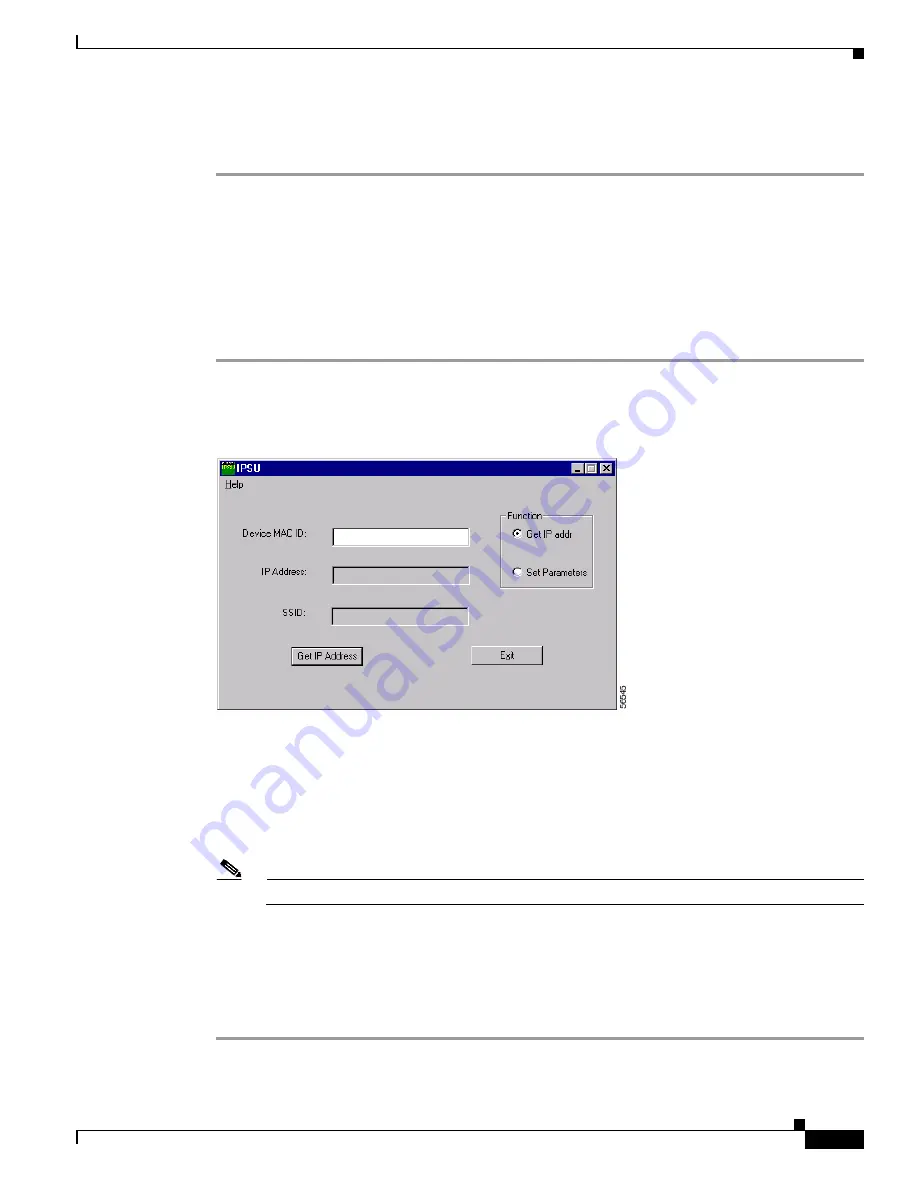
3-9
Cisco Aironet 1100 Series Access Point Installation and Configuration Guide
OL-2851-01
Chapter 3 Configuring the Access Point for the First Time
Using the IP Setup Utility
Step 9
Double-click
Setup.exe
and follow the steps provided by the installation wizard to install IPSU.
The IPSU icon appears on your computer desktop.
Using IPSU to Find the Access Point’s IP Address
If your access point receives an IP address from a DHCP server, you can use IPSU to find its IP address.
Because IPSU sends a reverse-ARP request based on the access point MAC address, you must run IPSU
from a computer on the same subnet as the access point. Follow these steps to find the access point’s IP
address:
Step 1
Double-click the
IPSU
icon on your computer desktop to start the utility. The IPSU screen appears (see
Figure 3-3
).
Figure 3-3
IPSU Get IP Address Screen
Step 2
When the utility window opens, make sure the
Get IP addr
radio button
in the Function box is selected.
Step 3
Enter the access point’s MAC address in the Device MAC ID field. The access point’s MAC address is
printed on the label on the bottom of the unit. It should contain six pairs of hexadecimal digits. Your
access point’s MAC address might look like the following example:
000164xxxxxx
Note
The MAC address field is not case-sensitive.
Step 4
Click
Get IP Address
.
Step 5
When the access point’s IP address appears in the IP Address field, write it down.
If IPSU reports that the IP address is 10.0.0.1, the default IP address, then the access point did not receive
a DHCP-assigned IP address. To change the access point IP address from the default value using IPSU,
refer to the
“Using IPSU to Set the Access Point’s IP Address and SSID” section on page 3-10
.






























